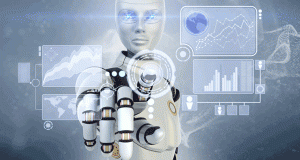What To Expect For Tech In 2018?
 What will be the big tech trends this year? Check our top 7 list!
What will be the big tech trends this year? Check our top 7 list!
1. Machines without a driver go to a new level
1.2 million people die in car accidents every year – and we can be rescued by autonomous vehicles that do not require a driver. Of course, the optimism about the fact that all accidents will disappear with the introduction of automated machines is premature. However, we have to admit: 90% of all accidents on the road (including victims) are due to human error, and 10% are due to equipment. What exactly will we avoid with the development of self-governing cars?
Man will give way to artificial intelligence and automatic systems. In this case, a man will become a valuable cargo. Systems with the ability for self-learning and development will solve unexpected situations on the road much more effectively. However, this is not the reason to remove the steering wheel in the cabin – in the end, in the conditions of failure of brakes or driving systems, someone must keep the car on the road.

tmeier1964 / Pixabay
2. The intersection of medicine and large data can give a significant result
Until now, medicine has used a universal approach to solving problems. However, the amount of available medical data in combination with technology makes it possible to make diagnostics and therapy as accurate as possible and to reduce the treatment down to the molecular level and a computer-accurate model for overcoming the ailments.
For example, the University of California is already teaching doctors to have different ways of communicating with different patients, so that instead of a universal approach to treatment, study all factors of influence, contexts, habits, living conditions and even the environment and the socio-economic conditions in which the patient lives.
Accurate medicine will allow us to move from creating a general picture of symptoms to establishing precise diagnoses and treating the mechanisms of disease formation themselves. In addition, cloud technologies will help to systematize this process and combine various data points into a common system.
3. Public spaces will change their role
Space is not just a place where you live, sleep or work. The space will begin to interact with you. Smart space will learn to integrate and interact with you. By lowering the cost of technology, sensors will become cheaper, which means that they can increasingly be built into the environment – protection and monitoring will be a convenient tool for changing the configuration and purpose of space, whatever role it plays: from health protection, recreation, research and production, life and entertainment.
A simple example: an adaptation of lighting, sound absorption, humidity and air temperature in hospital wards, depending on the patient’s health condition, the totality of current symptoms and well-being – all this is possible thanks to the collected mass of data from both the hospital and fitness trackers and various services.
4. Artificial Intelligence and Art
The research laboratory of Sony CSL has recently synthesized thousands of pages with music notations – and thus the first song written by artificial intelligence was formed. Procedural generation of data we already see in the game industry – it all started with the randomization of levels in Diablo, and turned into almost endless worlds and planets in the network game No man’s Sky.
5. The interface in our ears
Since the beginning of the 1980s, human-computer interaction has relied heavily on the graphical user interface (GUI). However, technologies are changing, as well as the interfaces. For example, you can now manage smart car systems using voice commands. Devices, such as Here One, explore the potential of augmented reality and its control by voice. Recently, Apple introduced its wireless headphones AirPods, – only the first step to a new type of interaction with interfaces using voice. The audio interface in 2018 will be one of the key for interacting with devices.
6. Bots for business
Internet bots and automated software have already announced themselves in 2017 – but they have gone further without stopping solely at customer support or information services from companies, banks and hotels (as it is mostly happening now). The next step for bots is the coordination of services and programs, the relationship with other artificial and semi-artificial decision making systems.
7. Smart houses and buildings
From clever sensors for the house, which control the humidity, temperature and doors, in the near future we will see the appearance of smart buildings and even expressways. Architects and scientists will work side by side so that natural and artificial materials can be made “smart” – bricks with bacteria, cement, which absorbs carbon dioxide, ventilation systems based on natural temperature and wind changes.
Smart cities are also a step to build tourism opportunities, to develop solar energy and reduce costs and create an environmentally friendly environment with an innovative infrastructure.
Quite impressive innovations are about to enter our everyday life. Are you ready?
Note: This article was contributed to ValueWalk.com by Melisa Marzett.
Category: Breaking News




